Types of Asian Sauces
Asian cuisine is known for its bold and diverse flavors, and one of the key elements that contribute to this is the wide variety of sauces used in Asian cooking. From tangy and spicy to sweet and savory, Asian sauces add depth and complexity to dishes. Whether you're looking to enhance the flavors of your Asian noodles, stir-fries, marinades, or dipping sauces, understanding the different types of Asian sauces can help you create authentic and delicious dishes that will impress your customers.
Shop All Asian SaucesAsian Sauces List
We explore some of the most popular Asian sauces and discuss their unique characteristics and culinary uses:
1. Soy Sauce
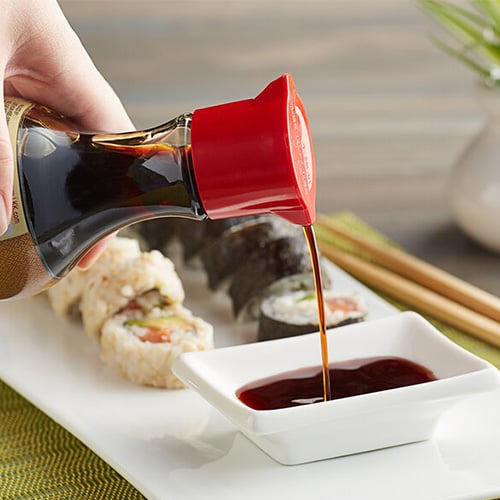
Soy sauce is a staple ingredient in Asian cuisine, known for its rich umami flavor. Made from fermented soybeans, roasted grains, water, and salt, soy sauce adds depth to a variety of dishes. Whether you’re using soy sauce as a marinade or providing soy sauce packets for your customers to use with their to-go orders, this foundational Asian sauce is perfect for adding bold flavors to your signature dishes.
- What Does Soy Sauce Taste Like? Salty, umami, and slightly sweet
- How to Use Soy Sauce: As a marinade, dipping sauce, or seasoning for noodles and stir-fry
- Types of Soy Sauce: Light soy sauce (saltier and lighter in color) and dark soy sauce (thicker consistency and slightly sweet)
- Substitutes for Soy Sauce: Tamari, coconut aminos, fish sauce, liquid aminos, or Worcestershire sauce
2. Hoisin Sauce
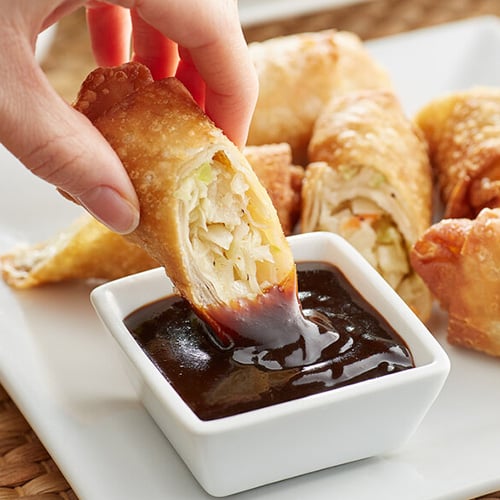
Made from a combination of soybeans, garlic, vinegar, and various spices, hoisin sauce is commonly used in Chinese, Vietnamese, and Thai cuisine. Its thick and sticky consistency makes it ideal for everything from glazing meats to offering it as a dipping sauce for spring rolls and dumplings. Hoisin sauce has a sweet and savory flavor that adds a level of complexity to your dishes.
- What Does Hoisin Sauce Taste Like? Sweet and salty
- How to Use Hoisin Sauce: As a dipping sauce for appetizers like spring rolls and dumplings, as a marinade for meat and vegetables, or as a glaze for Peking duck
- Substitutes for Hoisin Sauce: Oyster sauce, barbecue sauce, fish sauce, miso paste, or a combination of soy sauce, peanut butter, and honey
Hoisin Sauce vs Soy Sauce
While hoisin sauce adds a rich and savory flavor to dishes, soy sauce brings a salty and umami taste. Hoisin sauce is a thick, dark sauce that is slightly sweet and tangy, with a hint of garlic and five-spice flavor. It is commonly used in Chinese cuisine, particularly in dishes like Peking duck and moo shu pork. Contrastingly, soy sauce is a thin, salty sauce made from fermented soybeans, wheat, and salt. It is a staple in many Asian cuisines and is used as a seasoning or marinade for various dishes.
3. Teriyaki Sauce

Teriyaki sauce is an Asian sauce that originated in Japan. It is made from a combination of soy sauce, sugar, and mirin, a sweet rice wine. Teriyaki sauce is known for its sweet and savory flavor, and it is commonly used as a marinade or glaze for meats, such as chicken, beef, or salmon. It can also be used as a dipping sauce or as a flavoring for stir-fried vegetables. The sauce is typically thick and glossy, coating the food with a rich and caramelized glaze.
- What Does Teriyaki Sauce Taste Like? Sweet and tangy with a distinct umami taste
- How to Use Teriyaki Sauce: As a glaze and marinade for meats, as a dipping sauce for appetizers like spring rolls or potstickers, or as a seasoning for stir-fry dishes
- Substitutes for Teriyaki Sauce: Oyster sauce, a combination of soy sauce, honey, and ginger, or a combination of Worcestershire sauce and sugar
Teriyaki Sauce vs Soy Sauce
While both sauces add depth and umami to dishes, teriyaki sauce is sweeter and more suitable for glazing, while soy sauce provides a bold and salty flavor to enhance the overall taste of a dish. Teriyaki sauce is a sweet and savory sauce made from soy sauce, sugar, and mirin. On the other hand, soy sauce is a dark, salty sauce made from fermented soybeans, wheat, and salt.
4. Oyster Sauce
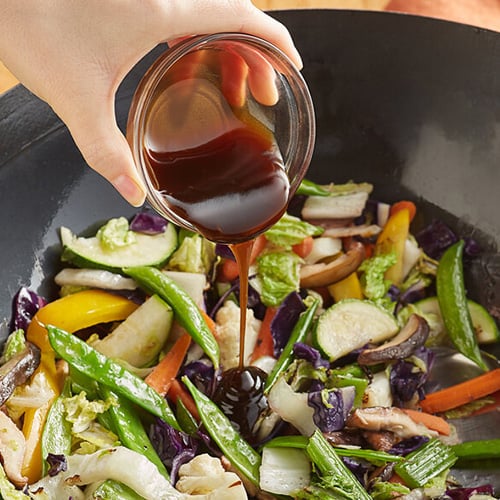
Oyster sauce is a popular condiment in Asian cuisine that is made from oysters (reduced and caramelized), soy sauce, sugar, and seasonings. It has a rich and savory flavor that adds depth to stir-fries, marinades, and dipping sauces. Oyster sauce is known for its thick consistency and dark brown color, making it a versatile ingredient for adding umami to dishes. It is commonly used in Chinese, Thai, and Vietnamese cooking, and its unique flavor profile complements a wide range of ingredients, from vegetables to meats.
- What Does Oyster Sauce Taste Like? Rich, briny, and sweet with a fishy umami
- How to Use Oyster Sauce: As a marinade, to season stir-fry, in dumpling fillings, and in soup
- Types of Oyster Sauce: Chinese oyster sauce, Thai oyster sauce (less salty with a stronger oyster flavor)
- Substitutes for Oyster Sauce: Hoisin sauce, teriyaki sauce, fish sauce, and soy sauce with sugar
Hoisin Sauce vs Oyster Sauce
The difference between hoisin sauce and oyster sauce is that hoisin sauce is sweeter and thicker, while oyster sauce has a more savory and briny taste. Hoisin sauce is made from soybeans, garlic, vinegar, and spices. It is commonly used as a dipping sauce for spring rolls, dumplings, and Peking duck. Oyster sauce is made from oyster extract, soy sauce, and other seasonings. It has a rich, umami flavor and is often used to enhance stir-fries, vegetables, and seafood dishes.
5. Sweet and Sour Sauce
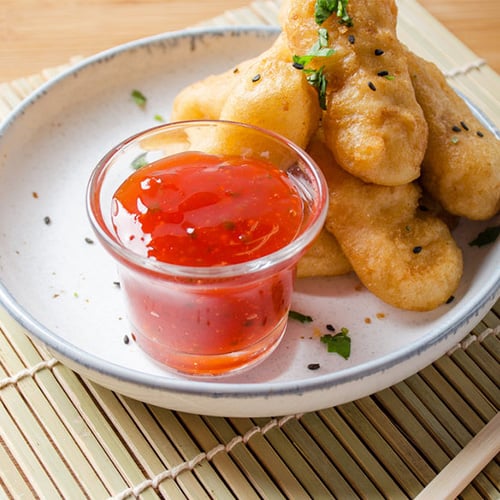
Sweet and sour sauce is an Asian condiment that combines the flavors of sweetness and tanginess. It is typically made with a combination of sugar, vinegar, soy sauce, pineapple juice, and ketchup. The sauce is typically thickened with cornstarch, giving it a smooth and glossy texture. The sauce is known for its vibrant red color and being served with sweet and sour chicken. Its unique combination of sweet and sour flavors makes it an excellent choice for dipping sauces, marinades, and glazes.
- What Does Sweet and Sour Sauce Taste Like? Sweet and tangy with a hint of umami
- How to Use Sweet and Sour Sauce: As a dipping sauce for appetizers like spring rolls and sweet and sour chicken, as a glaze for meats and vegetables, or as a seasoning for stir-fried dishes
- Substitutes for Sweet and Sour Sauce: Sweet chili sauce, teriyaki sauce with ketchup and vinegar, or a combination of pineapple juice, soy sauce, and brown sugar
6. Fish Sauce
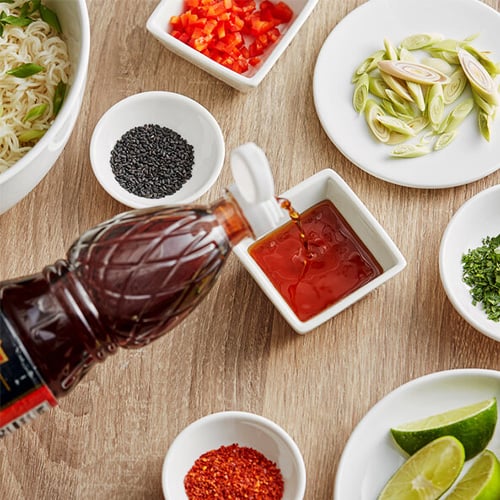
Made from fermented fish and salt, fish sauce is commonly used in Thai, Vietnamese, and Filipino dishes to add a savory flavor. Fish sauce has a distinct aroma and a strong, salty taste. Despite its strong smell, fish sauce mellows out when cooked and enhances the flavors of other ingredients. It is often used as a base for dipping sauces, marinades, and dressings.
- What Does Fish Sauce Taste Like? Salty and fishy with a hint of sweetness
- How to Use Fish Sauce: As a seasoning in stir-fries, as a marinade for meats, as a dipping sauces for appetizers, and in soups
- Types of Fish Sauce: Vietnamese fish sauce (nuoc mam), Thai fish sauce (nam pla)
- Substitutes for Fish Sauce: Oyster sauce, soy sauce with minced anchovy, seaweed, mushroom and soy sauce broth, or miso paste
Fish Sauce vs Oyster Sauce
While fish sauce adds a savory depth to dishes, oyster sauce adds a touch of sweetness and a glossy finish. Fish sauce is made from fermented fish and has a salty, savory taste. It is commonly used as a flavor enhancer in dishes like stir-fries, soups, and marinades. Oyster sauce is made from oysters and has a rich, sweet flavor. It is often used as a finishing sauce or a glaze for meats and vegetables.
7. Sweet Chili Sauce
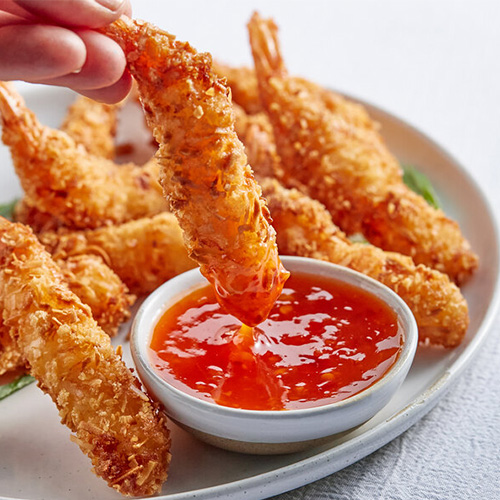
Sweet chili sauce adds a delightful balance of sweetness and heat to dishes. Made from a blend of red chili peppers, sugar, vinegar, and garlic, this sauce is often used as a dipping sauce for appetizers like spring rolls or chicken wings, or as a glaze for grilled meats and seafood. Sweet chili sauce is also a great addition to stir-fries, noodle dishes like ramen and pho, and marinades, adding a touch of spiciness and sweetness to elevate the taste of the dish.
- What Does Sweet Chili Sauce Taste Like? Sweet and tangy with mild spiciness
- How to Use Sweet Chili Sauce: As a dipping sauce for spring rolls and chicken wings, as a glaze for grilled meats and seafood, or as a seasoning for stir-fries
- Substitutes for Sweet Chili Sauce: Hot honey, hoisin sauce and hot sauce, plum sauce and hot sauce, or a combination of hoisin sauce, vinegar, and red pepper flakes
Sweet Chili Sauce vs Sweet and Sour
While sweet chili sauce and sweet and sour sauce may appear similar in color, both a vibrant orange, they have their distinct differences. Sweet chili sauce is made from a blend of red chili peppers, sugar, vinegar, garlic, and spices. It has a sweet and spicy taste, making it a versatile condiment for dipping, marinating, or glazing. Sweet and sour sauce combines the flavors of sweet and tangy with a hint of sourness. It is typically made from a mixture of sugar, vinegar, soy sauce, fruit juice, and ketchup. Sweet and sour sauce is commonly used as a dipping sauce for appetizers or as a sauce for stir-fried dishes.
Chili Sauce vs Sweet Chili Sauce
Chili sauce and sweet chili sauce have similar base ingredients but their own distinct flavor profiles. Chili sauce, often referred to as sriracha, is known for its fiery heat and tangy taste. Made from chili peppers, vinegar, and garlic, it adds a bold kick to dishes. Sweet chili sauce offers a milder alternative with a delightful balance of sweetness and spiciness. It typically contains chili peppers, sugar, and vinegar, creating a versatile sauce that can be used as a dip or glaze.
8. Gochujang Sauce

Gochujang is a popular Korean sauce that adds a unique and spicy kick to dishes. Made from fermented soybeans, red chili powder, and glutinous rice, gochujang sauce is known for its bold flavors and rich taste. It is commonly used as a marinade for meat, a base for stews and soups, or as a dipping sauce. Gochujang can also be used to add depth to stir-fries, noodles, and even salad dressings.
- What Does Gochujang Sauce Taste Like? Sweet, smoky, and spicy
- How to Use Gochujang Sauce: As a marinade for meats, as a dipping sauce for vegetables, or as a base for stews and soups; used for dishes like bibimbap, tteok-bokki, and bulgogi
- Substitutes for Gochujang Sauce: Sriracha, chili garlic sauce, hoisin sauce, or harissa paste
Gochujang vs Sriracha
Gochujang and sriracha are two Asian sauces that can add a little heat to your dish. Gochujang, a Korean sauce, is made from fermented soybeans, chili peppers, and glutinous rice. It has a deep, complex flavor with a balance of sweetness and spiciness. Gochujang is commonly used as a base for stews, marinades, and dipping sauces. Sriracha, a Thai chili sauce, is made from chili peppers, vinegar, garlic, sugar, and salt. It has a tangy, spicy flavor with a hint of sweetness. Sriracha is often used as a condiment for adding heat to various dishes such as noodles, stir-fries, and sandwiches.
9. Ponzu Sauce
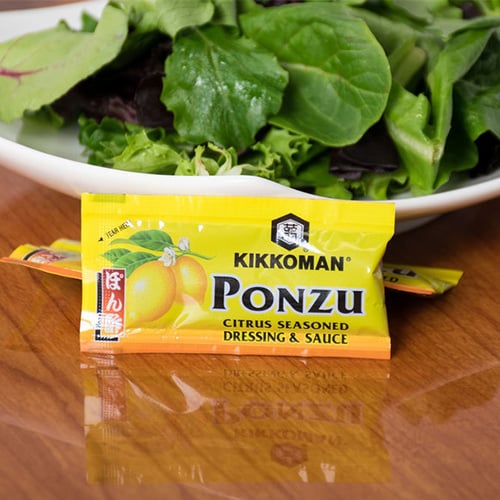
Ponzu sauce is a citrus-based sauce commonly used in Japanese cuisine. It is made by combining soy sauce, rice vinegar, and citrus juice, typically from yuzu (an Asian citrus fruit) or lemon. Ponzu sauce has a tangy and slightly sweet flavor, which makes it a versatile condiment for various dishes. It is often used as a dipping sauce for tempura, sushi, and sashimi, or as a marinade for grilled meats and seafood. Additionally, Ponzu sauce can be used to enhance the flavors of salads, noodles, and stir-fried vegetables.
- What Does Ponzu Sauce Taste Like? Tangy citrus with some sweetness
- How to Use Ponzu Sauce: As a dipping sauce for sushi and sashimi, as a dressing for salad, or as a marinade for grilled meats and seafood
- Types of Ponzu Sauce: Yellow ponzu (regular ponzu sauce), ponzu soy sauce, dashi ponzu soy sauce, yuzu ponzu sauce, and sesame ponzu sauce
- Substitutes for Ponzu Sauce: Soy sauce and lemon juice, lime juice and Worcestershire sauce, or a combination of rice vinegar, soy sauce, and a small amount of sugar
Ponzu vs Soy Sauce
Ponzu is a tangy and citrusy sauce made from rice vinegar and citrus juice, typically from yuzu or lemon, that often includes soy sauce. It is commonly used as a dipping sauce for sushi, sashimi, and tempura, or as a dressing on salad. Soy sauce is a savory and salty sauce made from fermented soybeans, wheat, water, and salt. It is a staple in Asian cuisine and is used as a seasoning or condiment for various dishes, such as stir-fries, fried rice, and noodle dishes. While both sauces add depth and flavor to dishes, ponzu offers a refreshing and acidic taste, while soy sauce provides a rich salty flavor.
10. Duck Sauce
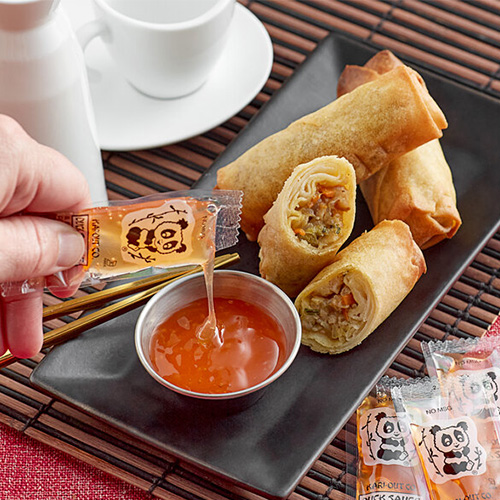
Duck sauce is a sweet and tangy sauce that is made from a combination of apricot preserves, plums, vinegar, sugar, and spices. Despite its name, duck sauce does not actually contain any duck. It is often served as a dipping sauce for dishes such as egg rolls, dumplings, and roasted duck. With its unique flavor profile, duck sauce adds a delightful burst of sweetness to any dish it accompanies.
- What Does Duck Sauce Taste Like? Sweet and tart
- How to Use Duck Sauce: As a dipping sauce for appetizers, dim sum, and crispy duck, or a seasoning for fried rice and noodles
- Substitutes for Duck Sauce: Plum sauce, sweet and sour sauce, sweet chili sauce, or hoisin sauce
Why Is It Called Duck Sauce?
Duck sauce was given its name because it is often served with duck entrees, particularly Peking duck. The sauce itself does not contain duck, but it is a sweet and tangy blend made from apricots, plums, sugar, vinegar, and spices. It is often served as a dipping sauce fried foods and dumplings, adding a burst of flavor to these dishes.
Duck Sauce vs Sweet and Sour
Despite their similar orange color, duck sauce and sweet and sour sauce are two different Asian sauces. Duck sauce is a sweet and tangy condiment made from plums, apricots, sugar, and vinegar. It is commonly used as a dipping sauce for egg rolls, dumplings, and roasted duck. Sweet and sour sauce is a combination of sweet and tangy flavors that typically includes sugar, vinegar, pineapple juice, ketchup, and soy sauce. It is often used as a glaze for fried or battered meats and vegetables. While both sauces provide a sweet and tangy taste, duck sauce has a fruitier flavor profile due to the use of plums and apricots, while sweet and sour sauce has a more savory taste with the addition of ketchup and soy sauce.
Back to TopFrom the rich and savory soy sauce to the sweet and tangy duck sauce, Asian sauces can enhance the taste of dishes and add a unique twist to your menu. Whether it's stir-fries, marinades, or dipping sauces, the versatility of these Asian sauces makes them a must-have for any restaurant or foodservice establishment. With their ability to elevate flavors and create authentic Asian cuisine, your customers are sure to come back for more.








